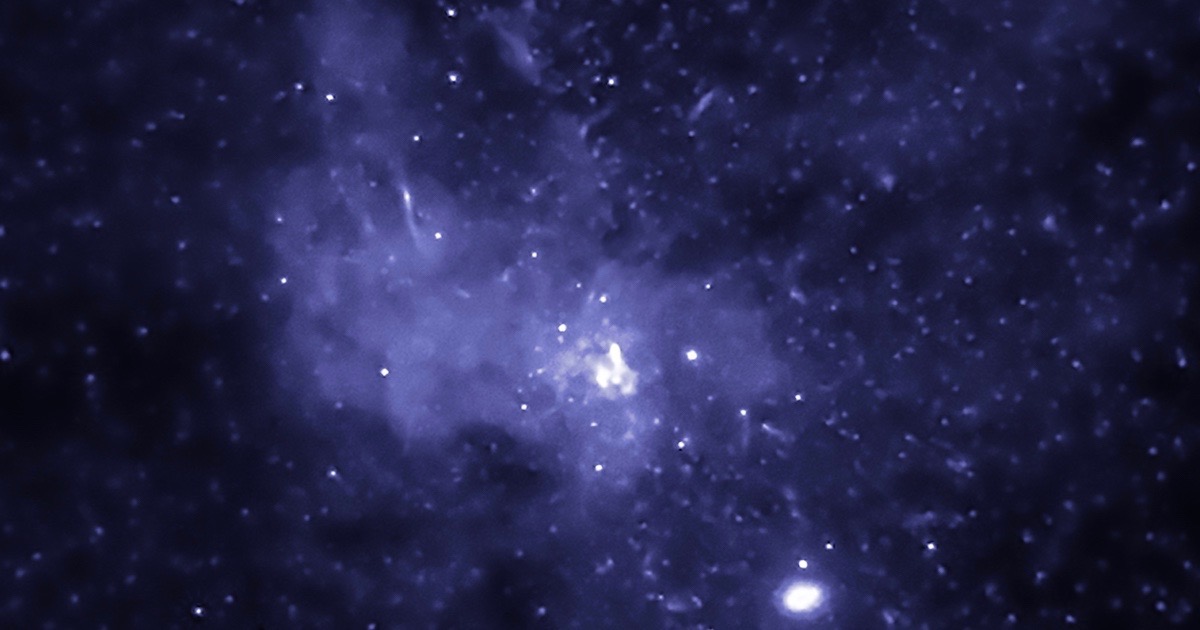 Physics, Earth & Space
Physics, Earth & Space
Astrophysics and Molecular Genetics with the Parking Brake On


Ross Pomeroy at Real Clear Science has a great essay on the reluctance of atheists to accept Big Bang cosmology. Pomeroy, who is no fan of ID, writes honestly about the impediment that atheist bias imposed on astrophysics in the mid 20th century.
The ancient model of the cosmos, which was the model presupposed by most scientists prior to the mid 20th century, was Steady State: the universe was eternal and unchanging. Einstein’s relativity theory, extended by Georges Lemaître (a physicist and Catholic priest), suggested that space-time was unstable, and a model of an expanding universe, originating from a singularity (i.e. from nothing), was a better fit to theory. The empirical evidence remained inconclusive for decades, although Hubble’s discovery of the red shift lent credence to the Big Bang model.
Pomeroy explains:
For these reasons, English astronomer Sir Fred Hoyle gathered with a few colleagues to formulate the Steady State theory of the cosmos. The idea kept the observable universe essentially the same in space and time, and it accounted for evidence suggesting that the universe is expanding by hypothesizing that matter is instead being created out of the fabric of space in between distant galaxies. Steady State didn’t have the problems inherent to the notion of a primeval atom, and, as Keating wrote “it sure as hell didn’t look like the creation narrative in Genesis 1:1.”
Any correspondence between the evidence in astrophysics and Genesis 1:1 was, from the perspective of the atheist scientists who dominated astrophysics, so much the worse for the evidence.
“Cosmic Chutzpah”
Pomeroy quotes Lemaître biographer Brian Keating:
Many atheist scientists were repulsed by the Big Bang’s creationist overtones. According to Hoyle, it was cosmic chutzpah of the worst kind: “The reason why scientists like the ‘big bang’ is because they are overshadowed by the Book of Genesis.” In contrast, the Steady State model was the rightful heir to the Copernican principle. It combined the banality of space with humanity’s mediocrity in time. Thanks to Hoyle, humanity had humility.
Pomeroy continues:
Hoyle, however, did not [have humility]. Over the decades, as more and more evidence lined up in favor of the Big Bang and against Steady State, the aging astronomer dug in his heels. Ironically, he behaved like the believing zealots he scorned, relentlessly defending his debunked theory until his death in 2001. Lemaître, on the other hand, remained humble and equivocal about the Big Bang throughout his life.
Astrophysics was hamstrung for decades by anti-religious bias. It was only after the evidence for the Big Bang became overwhelming, particularly with the discovery of the cosmic background radiation predicted by Big Bang theory, that the Steady State model was cast aside, and the emergence of the universe from a singularity — a moment of creation — was accepted in the astrophysics community.
The Scandal of Junk DNA
A more modern example of the impediment that anti-religious bias imposes on science is the junk DNA scandal. And it is a scandal. The ENCODE project, a collaborative effort by hundreds of the leading molecular geneticists in the world, has debunked the Darwinian inference that a large portion of DNA in the genome is “junk.” For decades, Darwinists insisted that much of the genome is non-functional evolutionary debris. This argument has been a cornerstone of the Darwinist attack on ID: If the genome is intelligently designed, why is much of the genome junk? Now that “junk” DNA is being swept into the dustbin of discredited science, Darwinists are scurrying, claiming that ENCODE is wrong and that most of the genome really is junk and even if it isn’t junk they never made the argument that it really was and that even if they did it is irrelevant to the Darwinism-ID debate. It’s quite a sight.
Like the Steady State model of the universe, junk DNA theory held science back for decades. Both scientific debacles were predicated on anti-religious bias. Advocates of the Steady State model saw it as a bulwark against the cosmology inherent to Genesis 1:1. Advocates of junk DNA saw it as a cornerstone of the Darwinist argument against “creationism,” and many Darwinists continue to deny the overwhelming evidence for the functionality of a large portion of the genome.
Why Study Junk?
Unlike the Steady State model, the junk DNA theory has been costly, certainly in terms of money and science and likely in terms of lives. Biomedical science has been impaired by junk DNA theory for decades. The inference that large parts of the genome were mistakes led to neglect. Why study junk? Now that we are beginning to understand that they are not junk, but have real biological function, we are only beginning to explore these aspects of the genome. Junk DNA theory, driven in large part by a passion to defend Darwinian orthodoxy in biomedical science, has set medicine and biomedical science back decades.
Pomeroy, referring to the debacle in astrophysics, notes:
This scientific saga demonstrates that entrenched beliefs affect the nonreligious as well as the religious. In the end, bias should always bow to evidence.
He’s right. Bias is on all sides in debates of this sort, of course. We all have predicates by which we understand the world. But it is imperative to be aware of our biases, and to follow the evidence. In astrophysics, the evidence points clearly to a moment of creation. In biology, the evidence points to deep purpose in the genome. The implications of this purpose should be explored with vigor, even though such exploration validates, not Darwinian mechanisms, but the design inference.
Image: “Black Hole Bounty Captured in the Center of the Milky Way,” by NASA/Chandra X-Ray Observatory.
